Whether you’re interested in raising cattle of your own or you simply think they’re delightful animals, you’ll want to see these uniquely fluffy cow breeds!
From cows with long, shaggy manes to those with short, dense, curly fur, these are some of the fluffiest, most luxurious bovines around.
Keep reading to learn more!
Table of Contents
ToggleHighland Cattle

This list just wouldn’t be complete without the Highland cow.
This fascinatingly fluffy breed has gone viral on multiple occasions, often known simply as the “fluffy cow” thanks to its long, fluffy fur all over its body.
In addition to its thick, shaggy coat, the Highland cow is especially famous for its long “emo hair” hanging down over its forehead and eyes, which gives it a somewhat mysterious appearance.
The Highland cow is named for its area of origin, the Scottish Highlands.
It has existed since the 1880s, having been bred for both milk and meat for hundreds of years.
The breed’s long, dense double coat was developed over time to help these cows withstand Scotland’s harsh, cold winters.
Since the 1880s, Highland cows have been exported to various countries to be bred for milk and meat and kept as pets for their adorable appearance and docile temperament.
It has since been exported to Canada, Australia, the United States, Denmark, and Finland, and it remains a popular breed worldwide.
The Highland cow’s coat can present in a wide range of colors, including:
- Brown
- Red
- Black
- White
- Yellow
- Gray
Baby Highland cows have shorter, more curly fur, which grows much longer and gradually straightens out slightly as they age.
Galloway
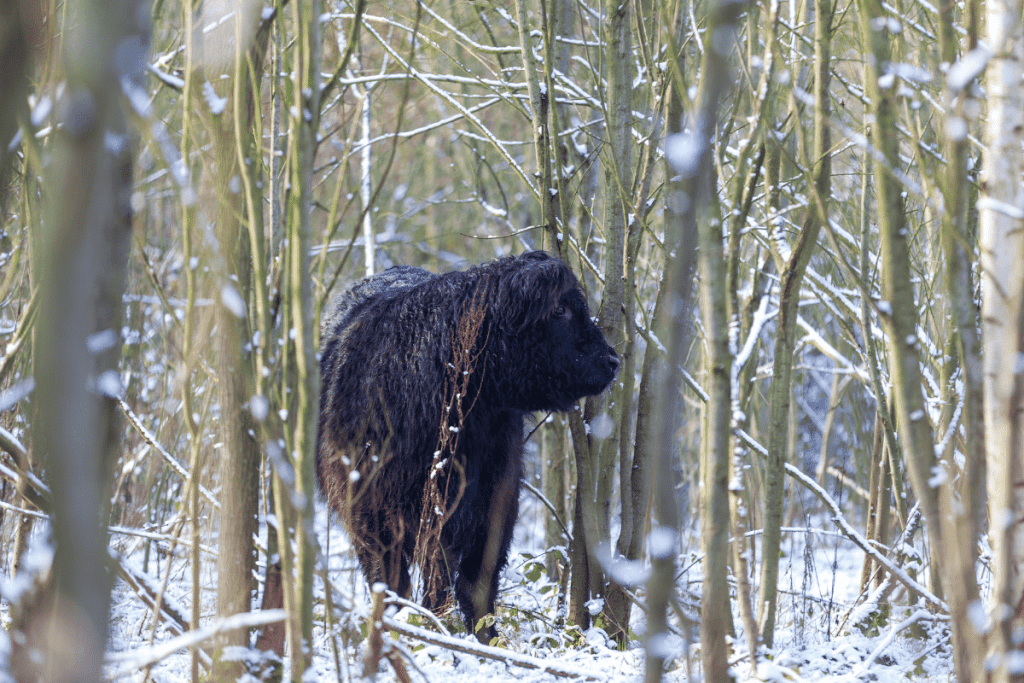
Although the Galloway cow’s coat of hair isn’t quite as long and luxurious as the Highland’s, it’s still a lot fluffier than the average bovine.
This breed is also native to Scotland and is one of the oldest cattle breeds in existence, established back in the 17th century.
Like the Highland cow, Galloway cattle have long double coats to help them better tolerate Scotland’s colder winter months.
Their long fur means they need very little body fat to stay warm, a quality that makes them a popular choice for the beef market.
The Galloway’s coat comprises two layers: a short, dense undercoat and an outer layer of much longer, stiffer hairs, which helps keep their bodies essentially waterproof.
This thick, hairy coat sheds heavily during the spring and summer, and it grows back in as temperatures drop in the winter.
In addition to their unique coats, Galloway cows are also notable for being naturally hornless.
Instead of horns, Galloways have a bony protrusion known as a “poll” atop their skulls.
Although initially successful, this breed dropped off in numbers significantly during the second half of the 20th century due to an outbreak of foot and mouth disease, which ravaged cattle populations.
Today, its numbers are estimated at less than 10,000, but this is steadily increasing once more.
Belted Galloway
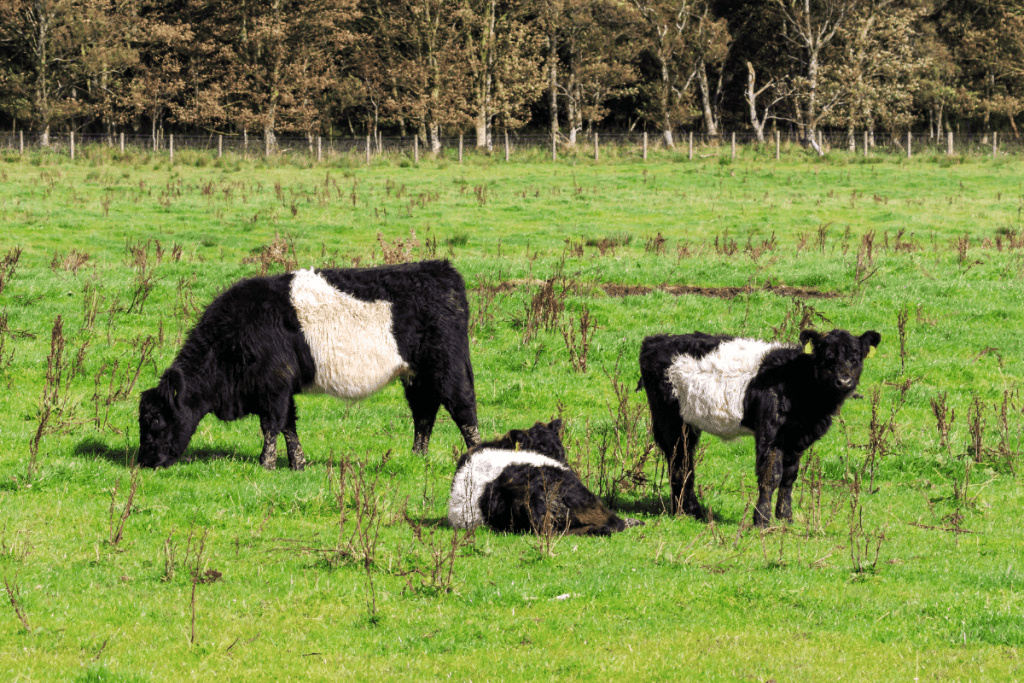
A popular variation of the aforementioned Galloway cow is the Belted Galloway, its horizontal white belt of fur across its abdomen.
In the 1920s, it was designated as its distinct breed separate from the typical Galloway.
They typically have a predominantly black coat with a single white belly stripe, but lighter dun-colored cows are also becoming more prevalent in recent years.
Belted Galloway cattle are a hardy breed of beef admired for their uniquely marbled beef, which is of very high quality.
Like standard Galloway cows, Belted Galloways are naturally hornless.
In addition to this trait, the breed is known for its long, soft double coat.
The cow’s soft undercoat increases its cold tolerance and keeps it warm and insulated during harsh Scottish winters, and its topcoat also makes it essentially waterproof!
Although foot and mouth disease outbreaks also significantly decreased this breed’s population at the start of the 21st century, their numbers are slowly bouncing back.
Today, Belted Galloways have been exported to various countries to be bred for primarily meat and milk, including Canada, France, Brazil, Germany, Holland, and more.
Chillingham Wild Cattle
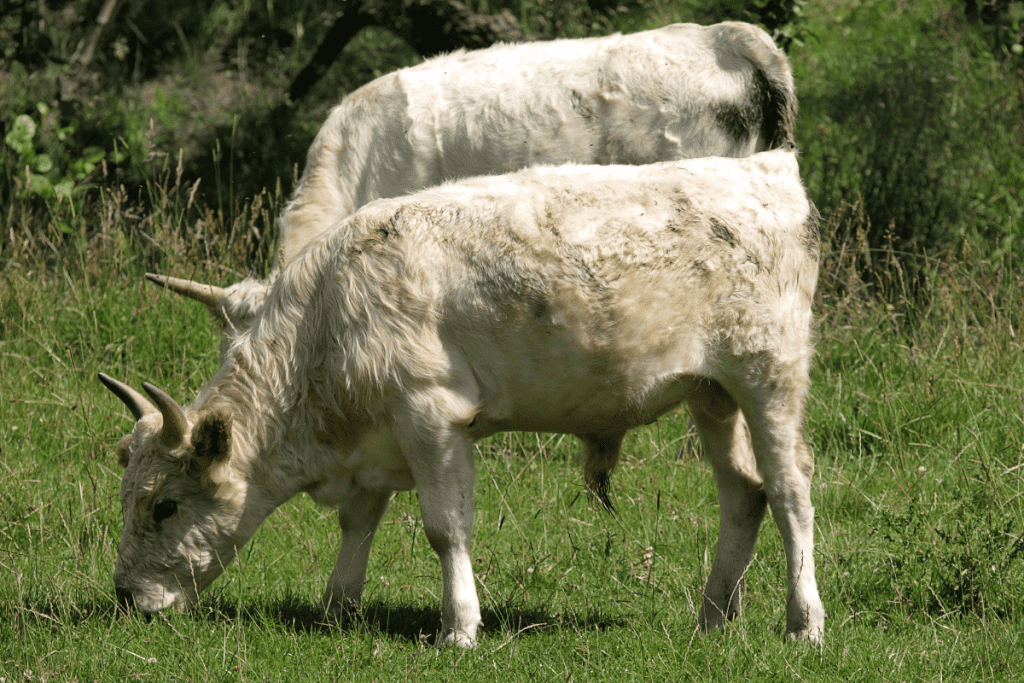
Chillingham cattle are a scarce breed, as there are only around 100 individuals currently living in the wild!
The breed is named after Chillingham Castle in Northumberland in the UK, where a small herd of cows lives in an enclosed park.
In addition to the 90 or so cows living at the castle, a much smaller herd of around 20 individuals living at the Crown Estate in Scotland.
The breed has never been widely domesticated.
These cows have a majestic appearance, with primarily white, medium-length, curly fur covering their bodies.
Similar to those mentioned above Highland and Galloway cows,
Chillingham cattle have developed their uniquely dense, wavy coat to help them tolerate Scotland’s cold winters.
The coat is especially curly and thick around the cow’s head and neck, though it varies in length from 1-4” inches.
Some individuals naturally have longer fur than others, though most Chillingham cows have a curly tuft of fur atop their heads.
This tuft of fur gives the breed a delightfully soft, fuzzy appearance.
Charolais

Named for the Charolais region in France, this breed of cattle is commonly bred for beef and is often crossed with other meat breeds such as the Hereford and Angus varieties.
While most of the Charolais’ coat is short and uniform, its head and neck have much denser, curlier fur.
Individuals typically have small, short tufts of curly fur atop their heads in between their ears.
Most modern Charolais cattle have been bred to be hornless, which gives them a soft, fuzzy, and elegant appearance in addition to their short, curly white fur.
Since the breed’s inception, the Charolais has become one of the most common beef cows and has been exported to more than 60 countries worldwide.
It has become especially popular in Mexico and the Czech Republic.
The Charolais now have several crossbreeds, including the Charbray, which was crossed with the Brahman breed, and the Canchim, which was bred with the Indu-Brasil.
North Devon
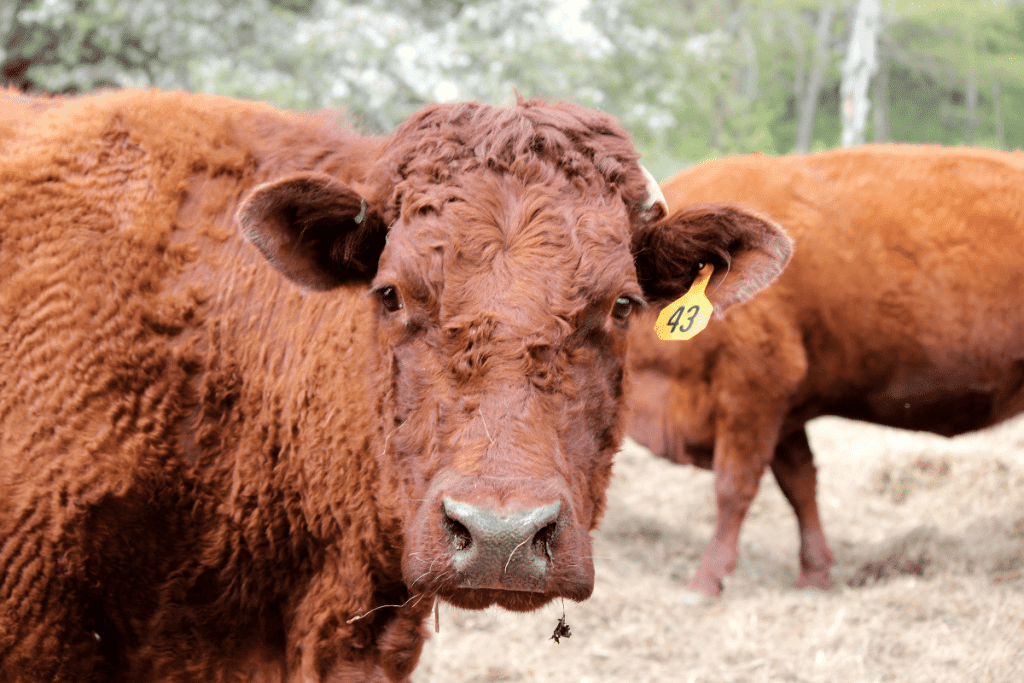
North Devon cattle are known for a few unique qualities: their rich, red-colored medium-length coats, which tend to get long and curly during the winter, their hardiness in cold temperatures, and their docile temperaments.
These cows are very easy to breed and care for.
Although they aren’t as popular as other breeds used for meat, they still are fairly popular in regions like New Zealand, Brazil, and Australia.
They are great foragers, which makes them excellent for controlling grass and other wild plant growth on farms.
At least year-round, the North Devon cow isn’t the fluffiest on this list, but its handsome red coat becomes much longer, softer, and curlier during the winter.
Though they have historically been bred for both meat and milk, they are almost exclusively bred for meat today.
They are also a very hardy, active, and fertile breed, which means they have few genetic health issues and are easy to crossbreed with other types of cattle.
Riggit Galloway
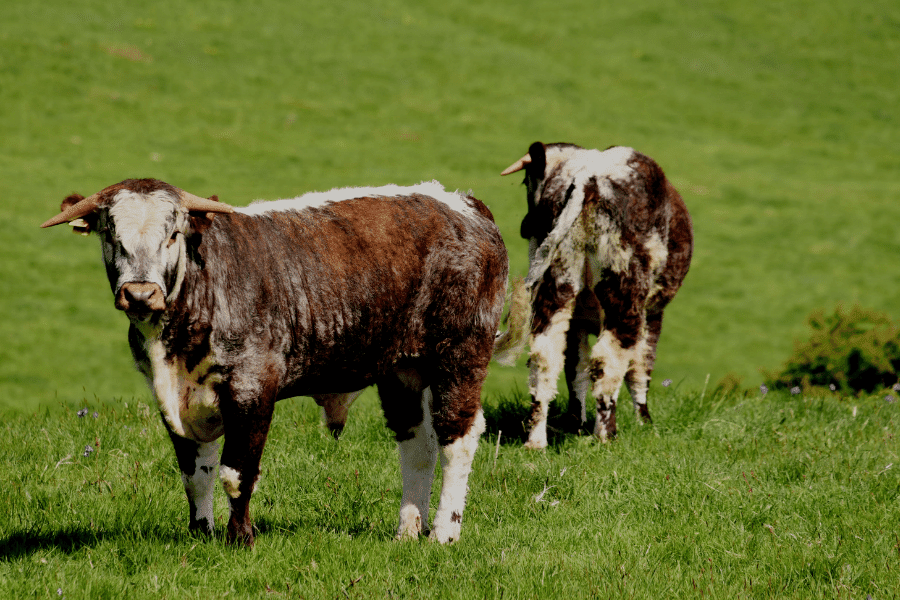
Yet another variation of the Galloway, the Riggit Galloway, has a similarly long, fluffy double coat.
Aside from their dense, soft, and curly fur, this specific type of Galloway cow is known for a thin, white stripe running down its spine.
“Riggit” is a regional Scottish term referring to this stripe.
The breed is also naturally polled/hornless and has a similar build to other Galloway cattle.
While all Riggit Galloway cows have their distinctive white stripe, their main body color ranges from black to brown and even red and dun shades.
It is common for individuals to have additional small patches of white throughout their long, waterproof coats, particularly on the face and chest.
Interestingly, it is believed that Riggit Galloway has existed for hundreds of years throughout western Europe.
This variation of the typical Galloway is especially adaptable, hardy, and fertile, so they are easy to breed and produce fairly high-quality meat.
While they are ideal for colder regions, they can adapt well to a wide range of temperatures and climates.
South Devon

The South Devon is fairly similar to the North Devon cattle with its medium-length curly red coat, though it tends to be larger on average.
It has historically been bred for both milk and meat, but it has almost exclusively been used for beef production in recent years due to its large size, hardiness, fertility, and rapid growth compared to other breeds.
It is common for South Devon cattle to be polled, though individuals with long, downward-curving horns are also common.
The cows are almost exclusively red or brown in coloration, and the breed’s coat is typically shaggier and curlier around its head and neck.
The breed has a rich history in the southwest UK, though it is unknown exactly how it was bred and developed.
Thanks to its success locally as a beef breed, it has since been exported to various other countries, including the United States, where it is still commonly bred for both high-quality meat and draught work, in part thanks to its robust size and rapid growth.
Read next: 8 Brindle Cow Breeds (With Pictures)
How useful was this post?
Click on a star to rate it!
We are sorry that this post was not useful for you!
Let us improve this post!
Tell us how we can improve this post?
